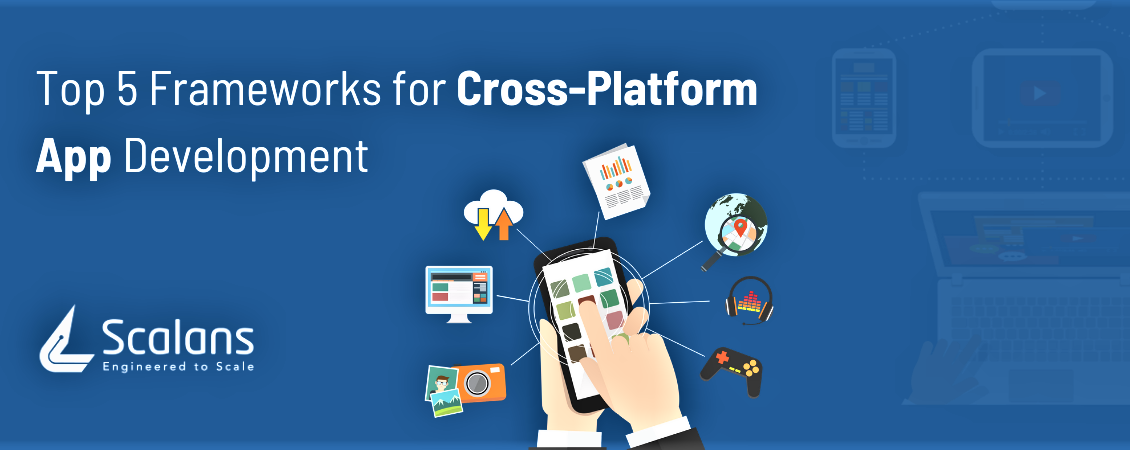
Top 5 Frameworks for Cross-Platform App Development
Native apps were once a big rage among developers and entrepreneurs; now it’s the turn of cross-platform apps.
Cross-platform development means building a single app that can run seamlessly across various platforms – both mobile and web.
Developing a cross-platform app is, indeed, a boon to businesses as they can reach out to a large clientele without having to spend a fortune on building different apps for multiple platforms.
Generally, all the frameworks used for developing cross-platform applications have the following basic characteristics:
- Single codebase
- One-time coding
- Code reusability
- Lesser time-to-market
- Cost-effectiveness
- High developer productivity
- Open-source
- Growing or vibrant developer community
So, let’s take a look at some of the best and widely used cross-platform app development frameworks.
- React Native
A highly popular hybrid mobile app framework developed by Facebook, React Native creates apps for iOS and Android platforms. It utilizes JavaScript and React’s declarative UI components to bind native code and work with native APIs, thus the native look and feel of the apps.
React Native uses the best features of ReactJS and also allows developers to access native iOS and Android modules, thereby ensuring near-native performance for apps.
Top customers: Facebook, Instagram, Uber, Skype, Walmart
- Ionic
Licensed under MIT, Ionic is a hybrid UI framework that builds iOS, Android, Electron apps, as well as PWAs. It relies mostly on HTML5, CSS3, Sass and JavaScript, and can also work with ReactJS, AngularJS and VueJS.
Ionic apps have highly interactive and beautiful UIs and almost 98% code can be reused. It has a rich set of native plugins that can access core features of devices.
Top customers: NASA, GE, BMW, Airbus
- Xamarin
A Microsoft-driven product, Xamarin builds iOS, Android and Windows apps using C# and .NET wrapped native libraries. Code sharing is about 96% and the Xamarin apps for different platforms can be built in Visual Studio.
Xamarin easily binds to native APIs and uses platform-specific UI elements, thus offering a native user experience. It can also develop apps for wearables and TV.
Top customers: Microsoft Azure, Alaska Airlines, BBC Good Food, Olo
- Flutter
A BSD-licensed software development kit used for creating visually appealing user interfaces, Flutter is a product of Google and works across iOS, Android, Windows, macOS, etc. It basically uses Dart, an object-oriented language that does AOT compilation without JavaScript bridge.
The main feature of Flutter is a rich collection of UI widgets, including those specially designed for iOS and Android. It allows hot reloading and faster QA, and is ideal for developing MVPs.
Top customers: Alibaba, Google, Hamilton, Baidu
- NativeScript
Android and iOS apps can also be built using NativeScript – an Apache 2 licensed framework that uses JavaScript or TypeScript, and CSS for programming. It also supports AngularJS and VueJS.
NativeScript simplifies app development as it directly interacts with mobile native APIs without the help of WebView-based wrappers. It is particularly helpful for converting Angular and Vue web apps into mobile apps.
Top customers: Deloitte, Thomson Reuters, Verizon, Cigna
Conclusion
Other cross-platform frameworks worth mentioning are Apache Cordova (PhoneGap), Appcelerator Titanium, Sencha Touch, Corona SDK and Qt.
Choosing the right cross-platform development isn’t a tough decision; with the guidance of the best mobile app development company, you can build mission-critical cross-platform apps for your business.



